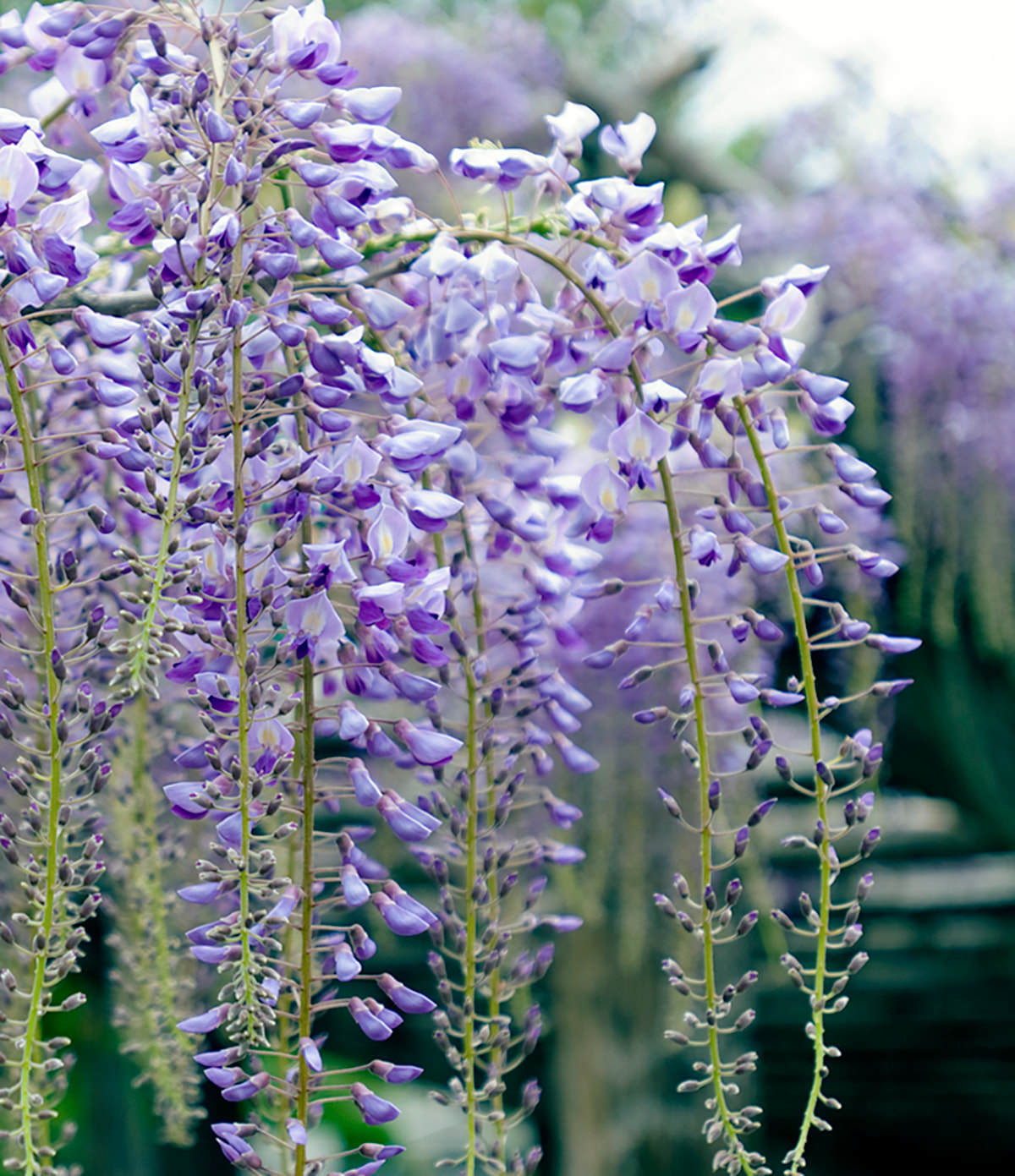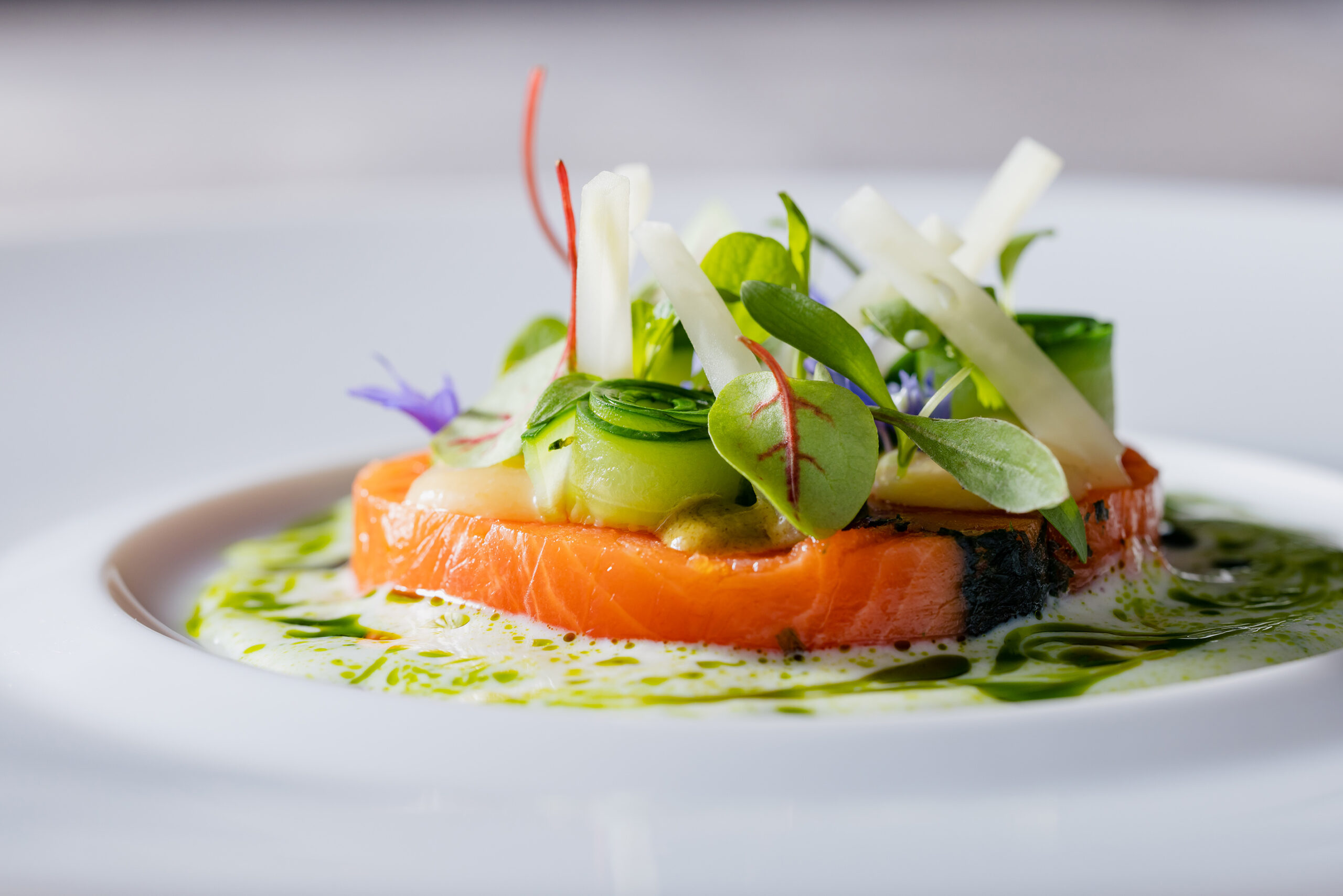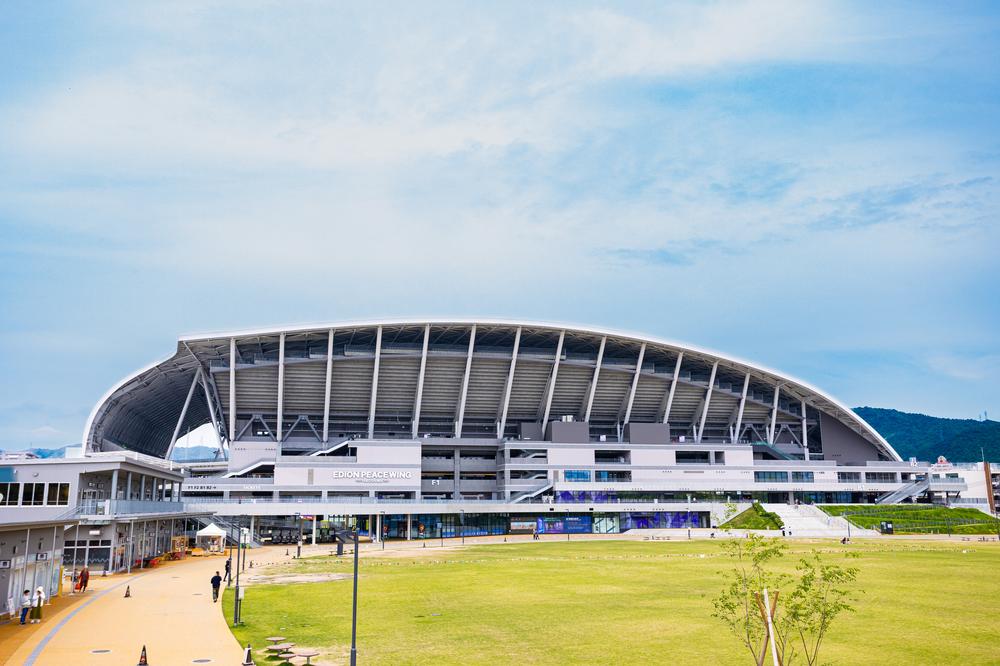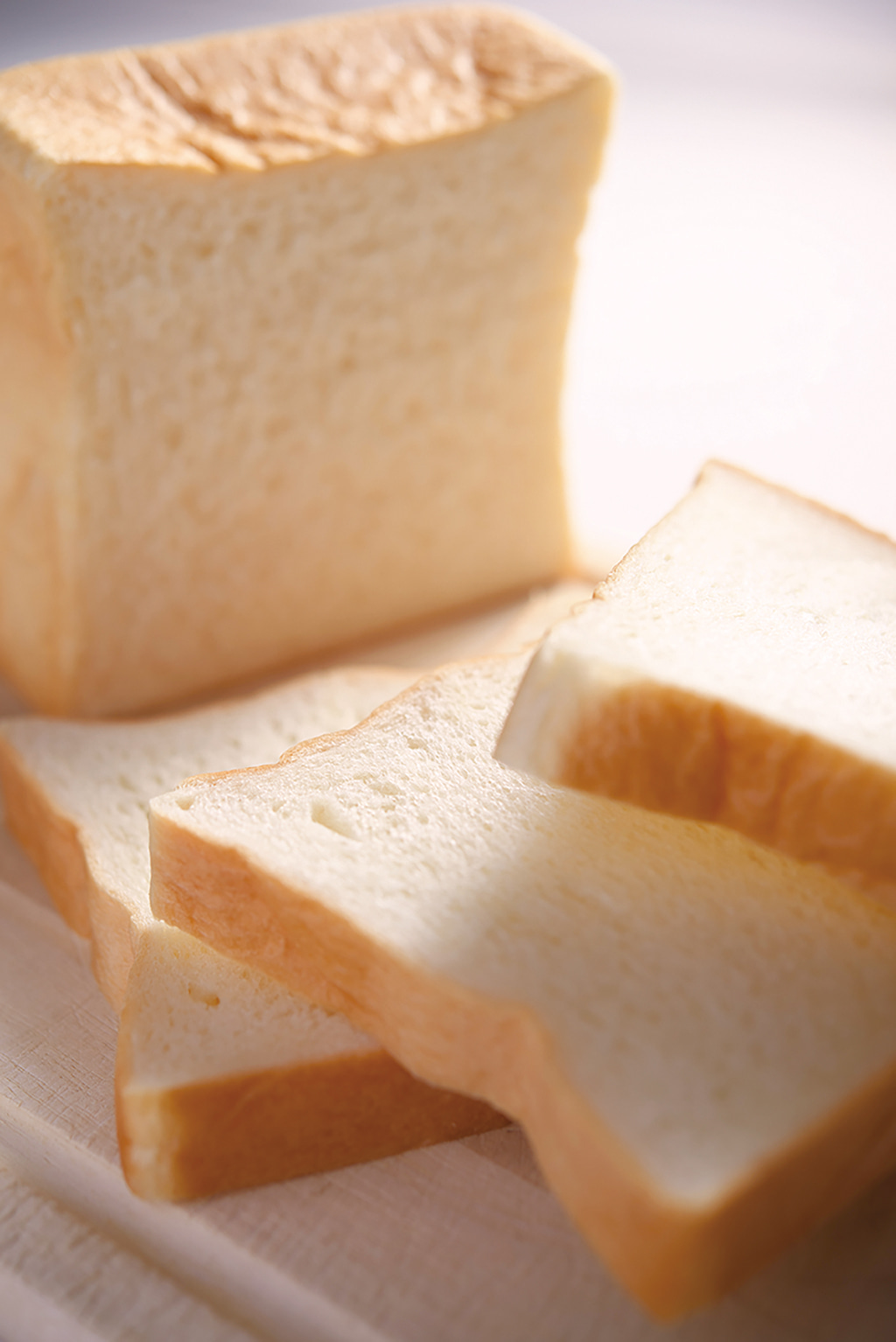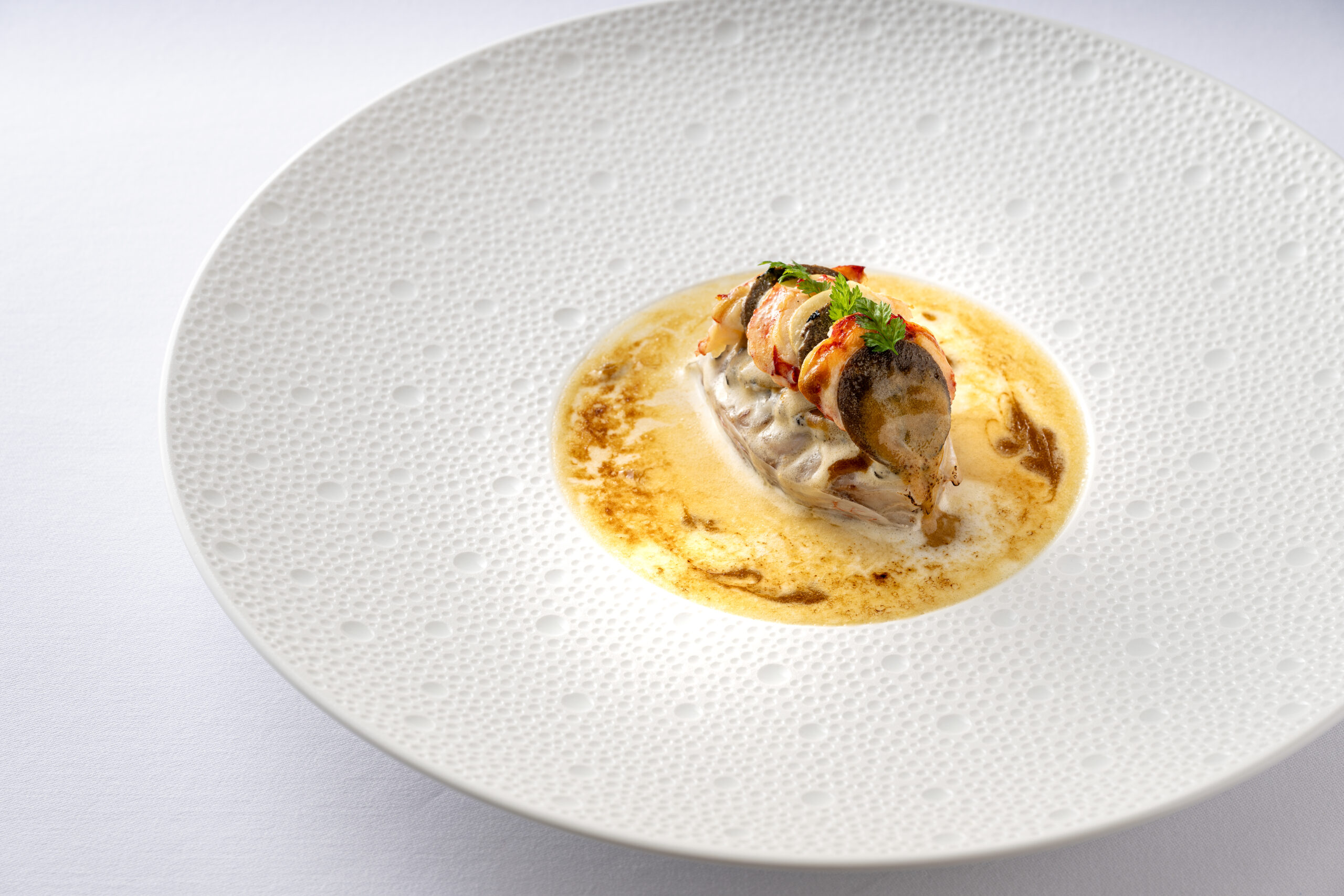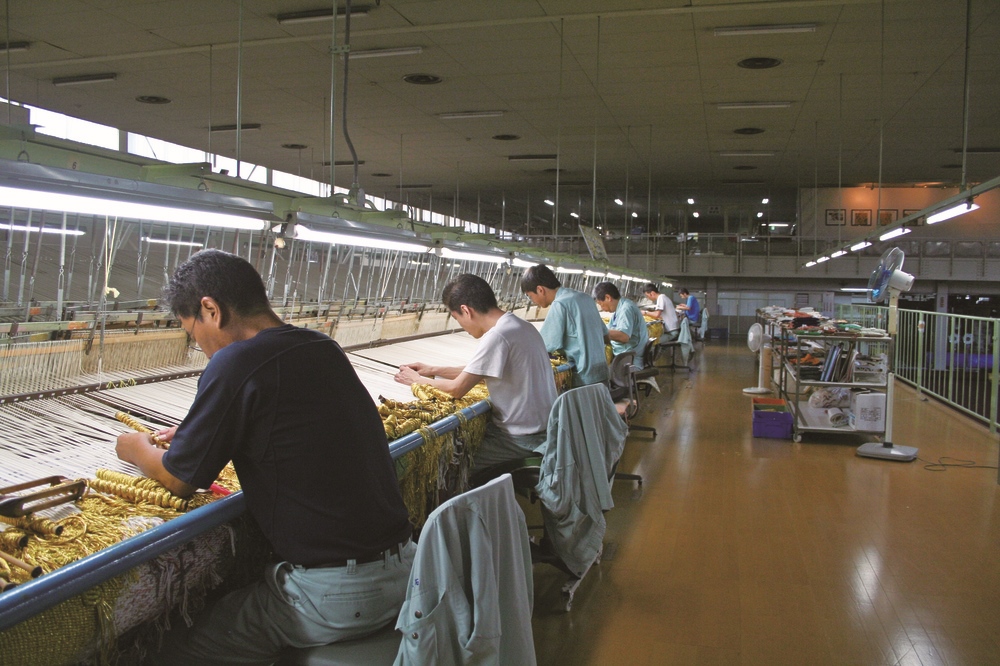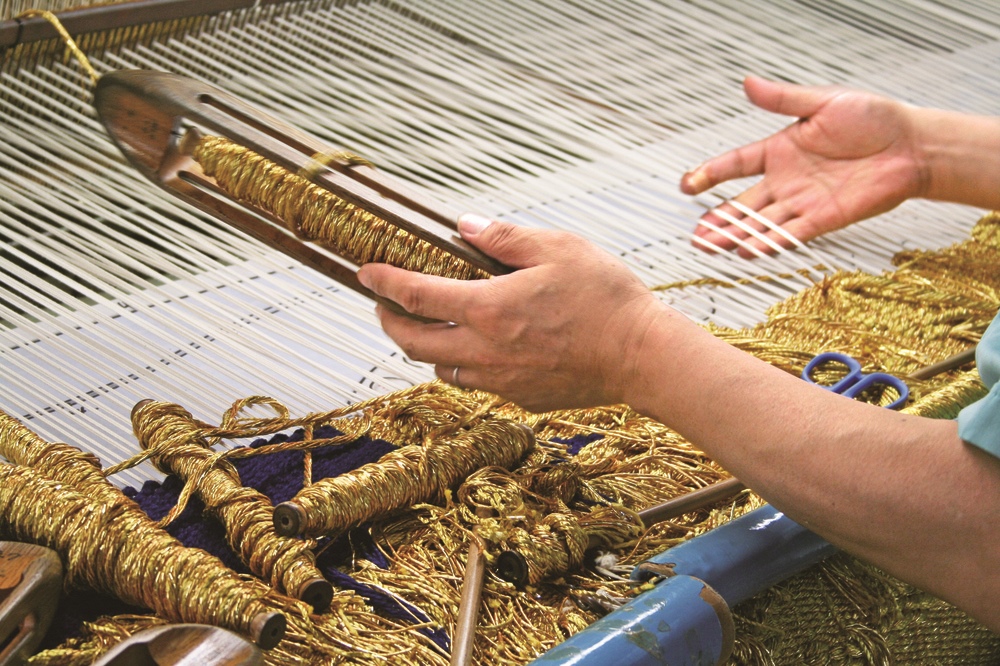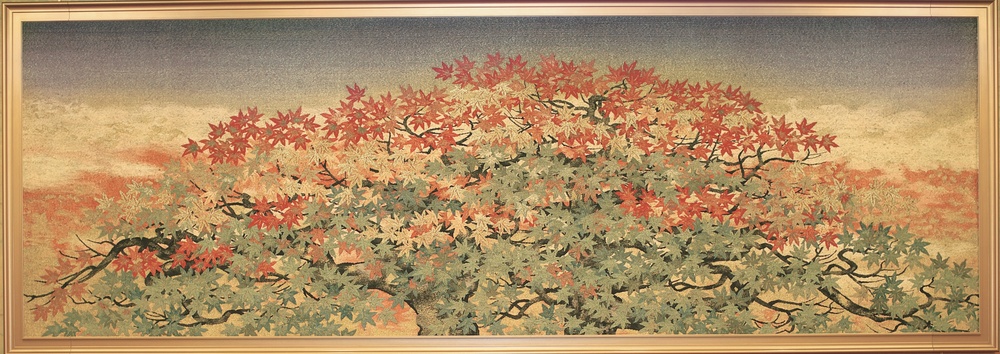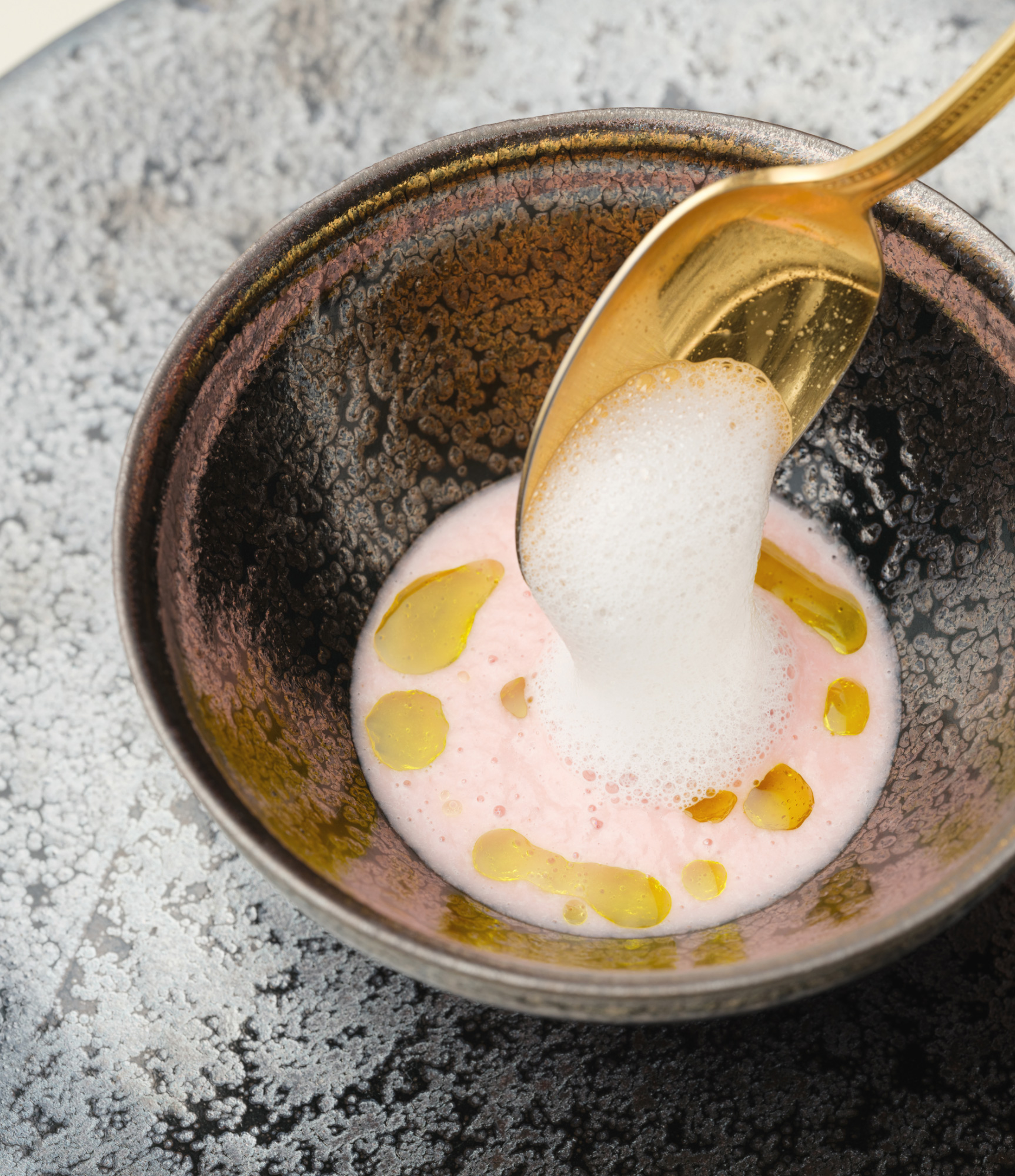
Masterpieces Depicting the Life and Mystery of Trees, Recreated in Tsuzure-ori Tapestry
ROYAL GALLERY
—Three Framed Tapestries at the RIHGA Royal Hotel Kyoto—
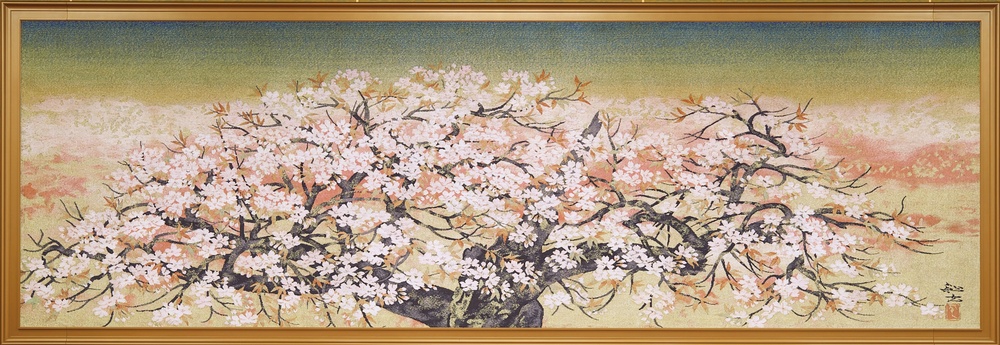
More than half a century has passed, yet the colors remain virtually unchanged from when the piece was completed. This monumental framed tsuzure-ori (handwoven tapestry) work is based on preparatory drawings by Toshio Hirakawa (1924–2006), who set the tone for an era with his nihonga (traditional Japanese paintings) of trees full of vitality.
The three framed tapestries that have adorned the banquet hall Shunju-no-Ma since November 1969, when the Kyoto Grand Hotel (predecessor of the RIHGA Royal Hotel Kyoto) opened, were created by Kawashima Selkon Textiles Co., Ltd. (then known as Kawashima Textiles), headquartered in Shizuichi Ichihara-cho, Sakyo-ku, Kyoto.
According to Kawashima Selkon Textiles, these magnificent framed tapestries measuring 8.5 meters wide by 2.8 meters high were woven on a large tsuzure-ori loom with a weaving width of 13.2 meters. The original paintings were works by Hirakawa, and extensive deliberation went into determining which threads to use, and how to combine them, to faithfully reproduce the colors in the paintings. Approximately 100 different colored threads were used, with six or seven technicians working side by side to weave them simultaneously. Each framed piece required about three months to complete, and after weaving, several days were spent correcting the hatsuri-me* in the design. Finishing work was carried out at the hotel, where the pieces were installed by Hirakawa himself together with staff from Kawashima Selkon Textiles. All of the framed tapestries were donated by Kyoto companies, including Kawashima Selkon Textiles, indicating that a broad base of people held great expectations for the birth of the new hotel.
The RIHGA Royal Hotel Kyoto’s grand banquet hall Shunju-no-Ma can be divided into three rooms, each adorned with a framed tapestry. The first to catch the eye upon entering is Pine in the central room. Cherry Blossoms is in the room to the right, and Autumn Leaves in the room to the left.
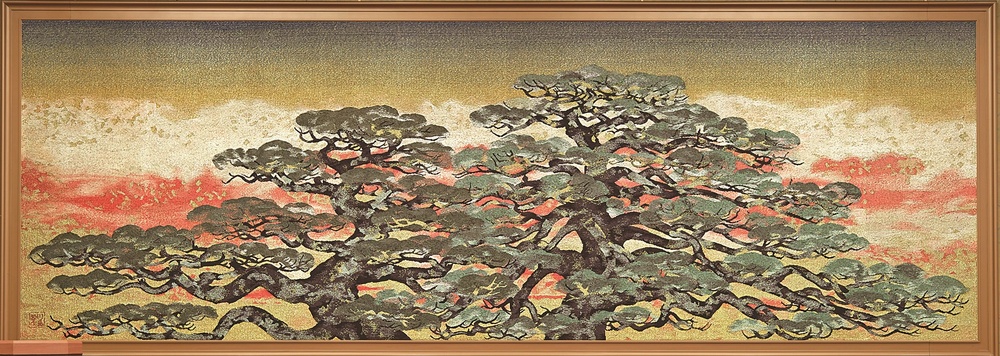
Born in Aichi Prefecture, Hirakawa was an artist who pursued the theme of trees throughout his life, inspired by their resilient vitality after witnessing new buds sprouting in the year following the devastating damage to forests caused by Typhoon Tess, which struck the Mikawa region in 1953. For Hirakawa, the period from the late 1960s to the early 1970s, when these three works were created, marked a time of great artistic breakthrough.
Since opening in 1979, the Toyohashi City Museum of Art and History has collected works by artists from the Higashi-Mikawa region, including Shingo Hoshino and Kazuo Omori, and it holds many of Hirakawa’s works. Shunji Ono (currently Special Curator at the Hekinan City Tatsukichi Fujii Museum of Contemporary Art), who previously was Chief Curator at the Toyohashi City Museum of Art and History, explains: “Hirakawa-sensei was primarily a painter who pursued a monochromatic world of mystery, rarely creating colorful paintings. In the early 1960s, he depicted harsh nature, focusing on primeval forests, but in the latter half of the decade, there was a period when he made famous trees his theme. This was precisely when these three pieces were painted, making them precious works.”
However, he stopped producing vividly colored works in the 1980s as he arrived at an artistic mood centered on subtle gradations of ink. Had the opening of Kyoto Grand Hotel been five years earlier or later, we might have never seen Hirakawa’s vivid Cherry Blossoms, Autumn Leaves, or Pine here.
Eriko Inokuchi from the RIHGA Royal Hotel Kyoto’s Bridal Department says, “During the spring and autumn wedding seasons, we often get requests to pose in front of Cherry Blossoms or Autumn Leaves for pre-wedding photos, in-house photo weddings, and commemorative photos after receptions. The vibrant Cherry Blossoms is especially popular. We arrange the bride and groom’s seats in front of the piece, and when the bride is wearing a white kimono or dress, both she and the artwork look absolutely stunning.” She also notes that many members of Rotary and Lions clubs recognize that the original paintings are by Hirakawa.
Kyoto, the ancient capital where Japanese history and culture still thrive, continues to captivate people from all over the world with its beauty and charm. Tourist numbers to Kyoto have increased for many years, surpassing 30 million annually in 1970, and growing to 40 million by the early 2000s. In 2024, fifty-five years after the opening of the Kyoto Grand Hotel, “Kyoto fever” has intensified even further, with approximately 56 million tourists visiting the city. The three framed tapestries hanging in the RIHGA Royal Hotel Kyoto’s banquet hall continue to offer moments of tranquility to visitors from around the world, reminding them of what a great place Kyoto is.
*Hatsuri-me: gaps that form at the boundaries of design patterns.
Text by Eriko Michida, 140B
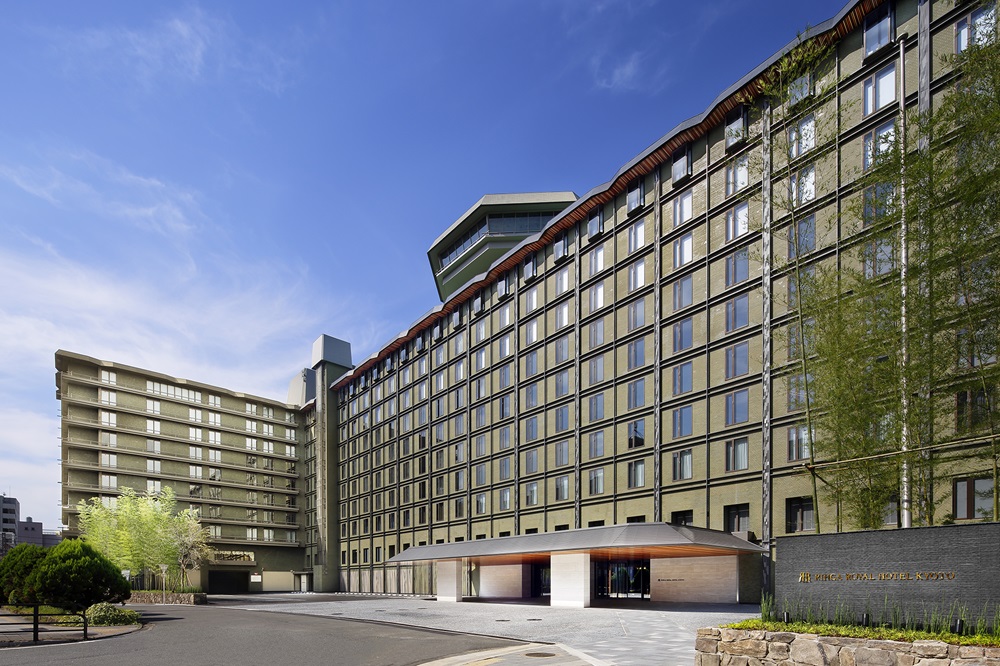
RIHGA Royal Hotel Kyoto
Phone: +81(0) 75-341-1121
1-Taimatsu-cho, Shiokoji-sagaru, HigashiHorikawa-dori, Shimogyo-ku, Kyoto 600-8237, Japan


